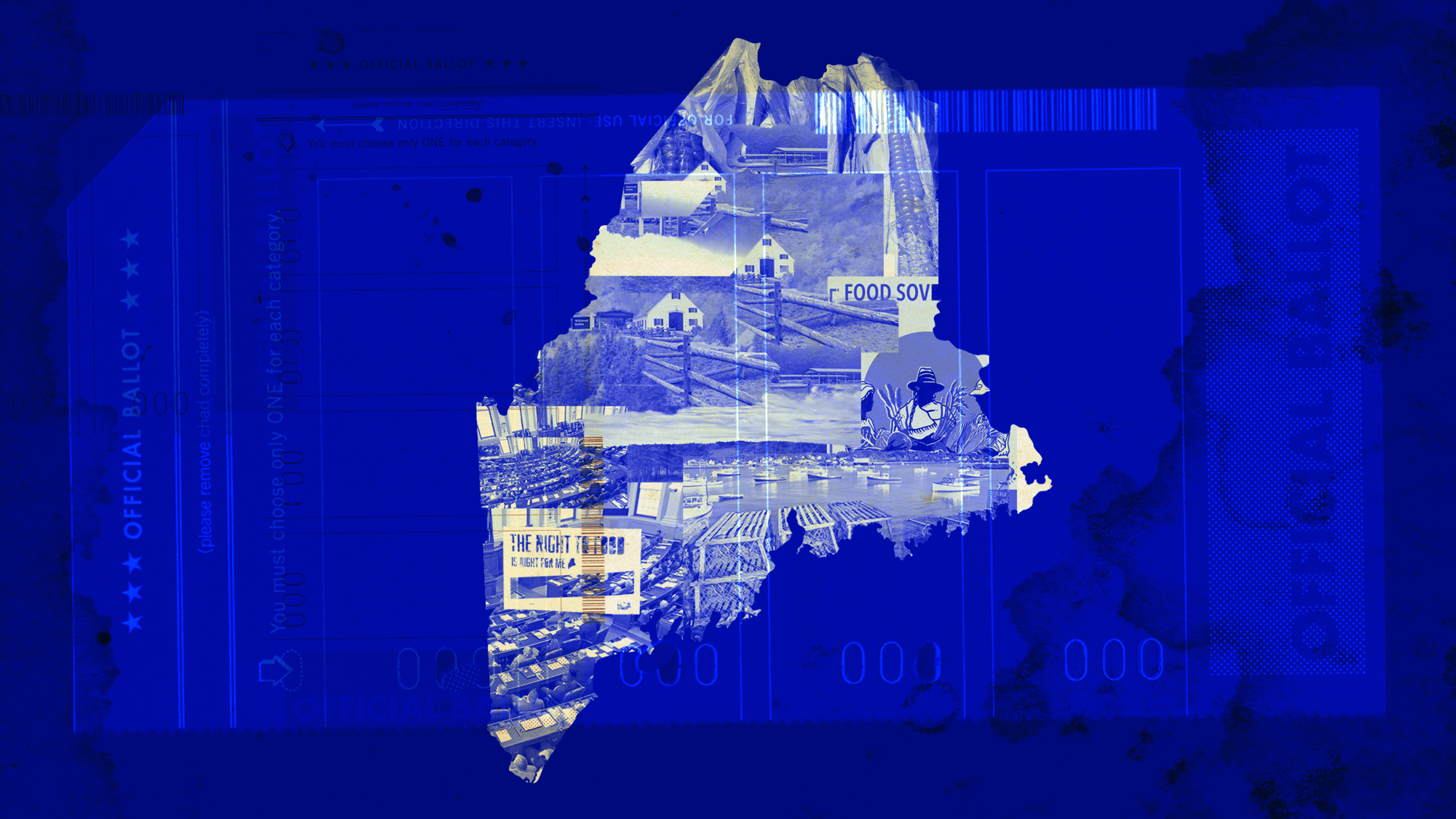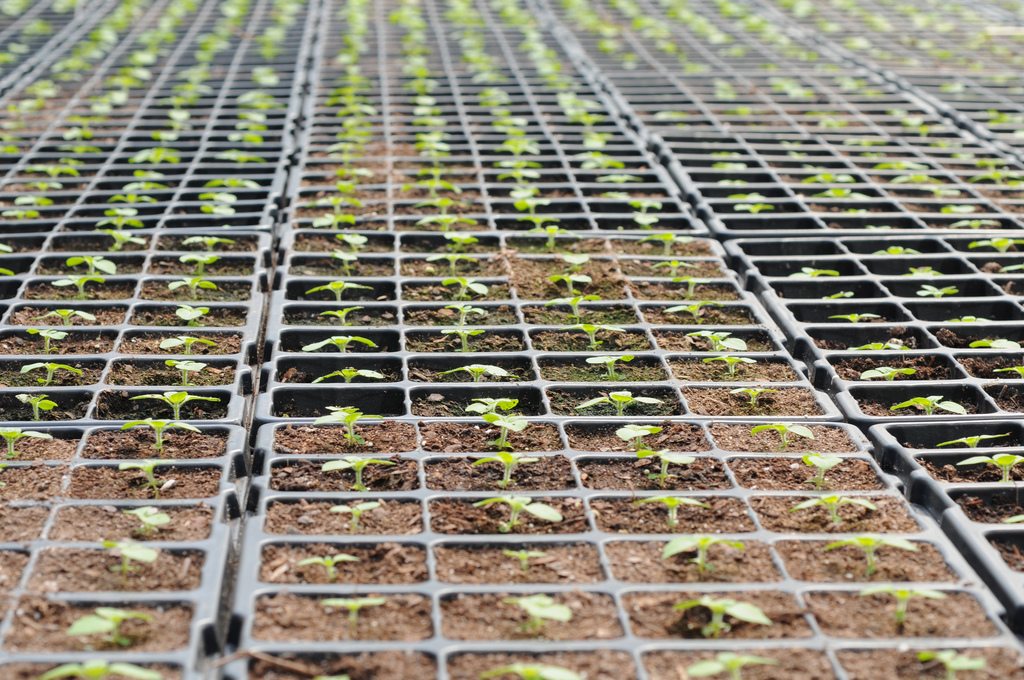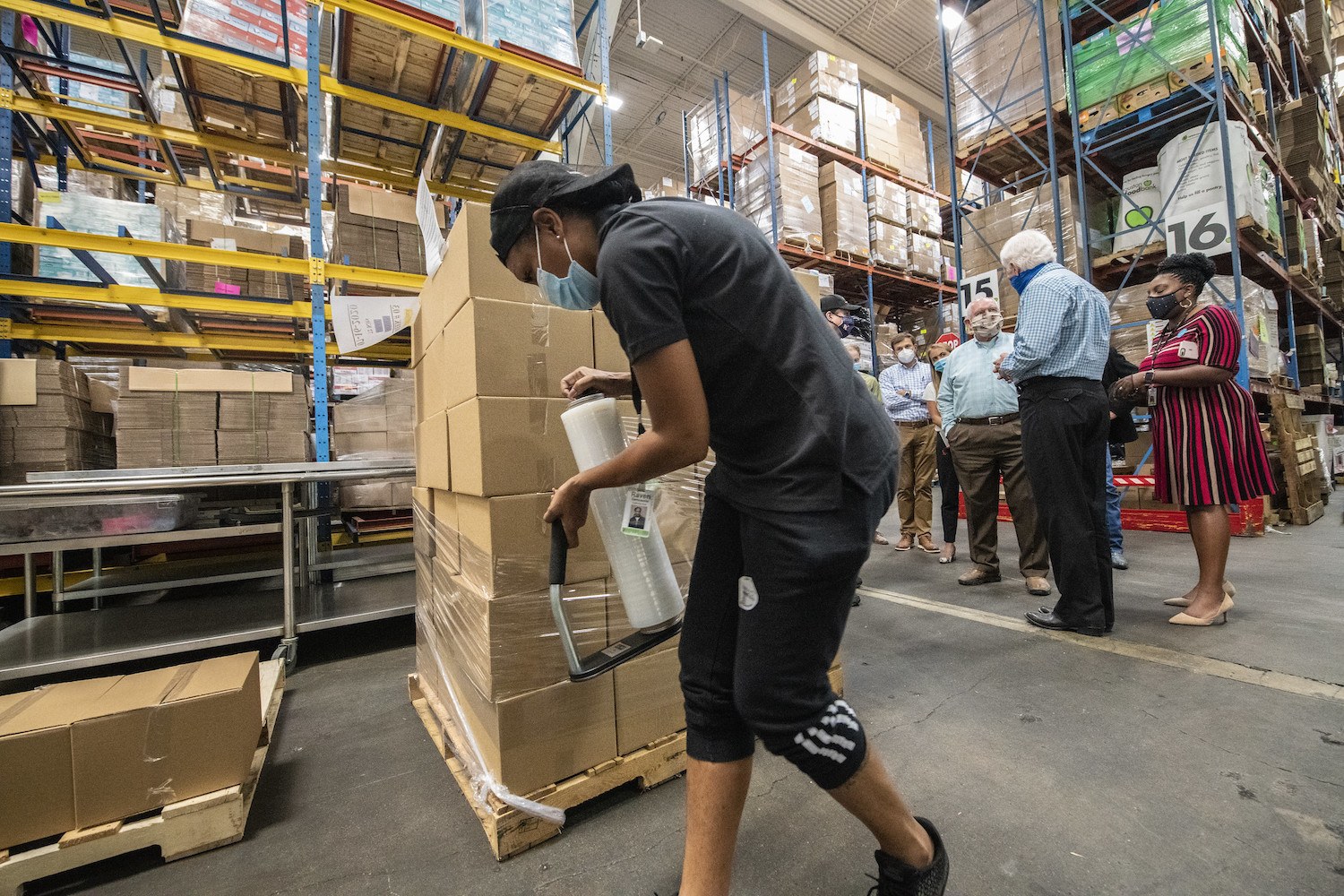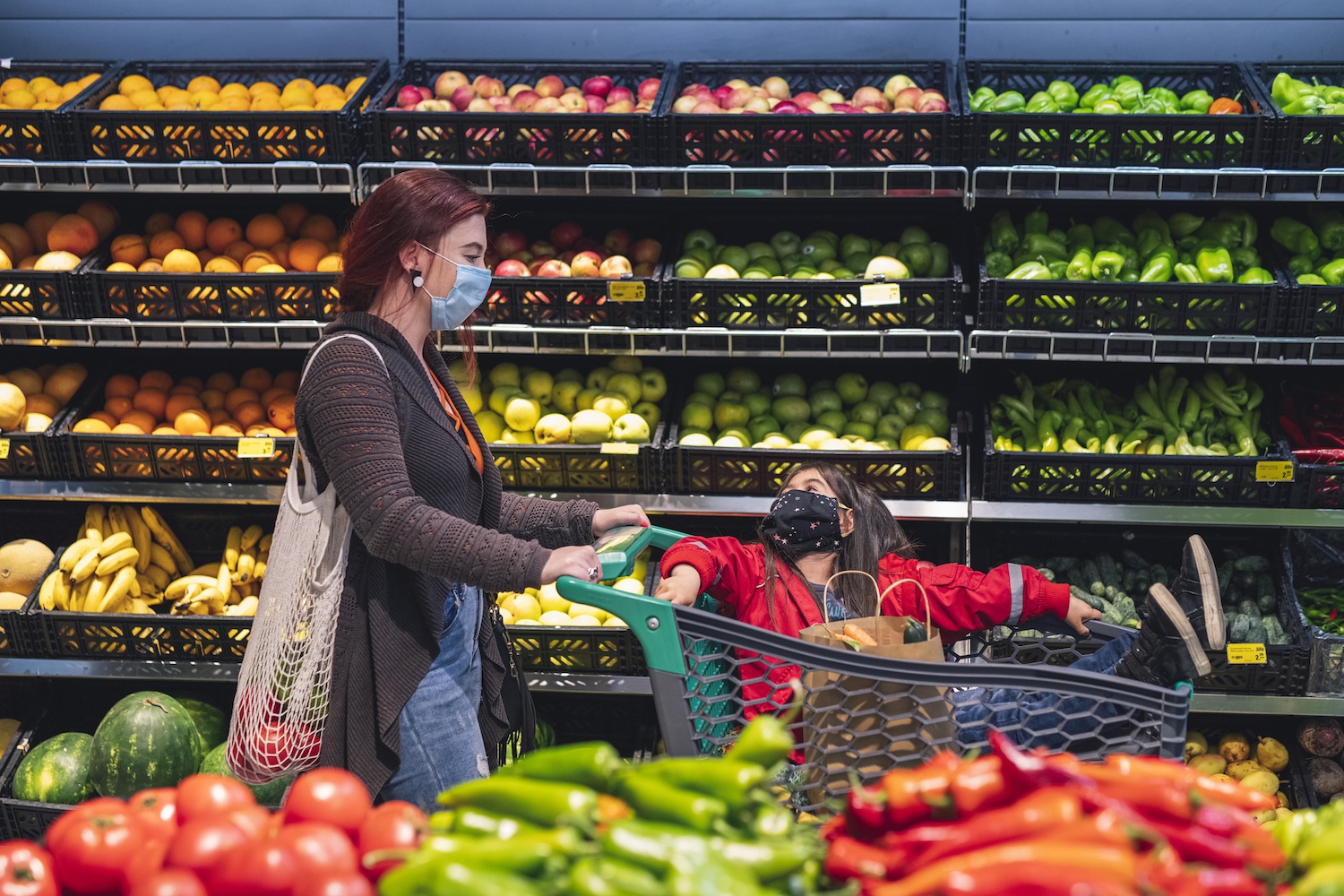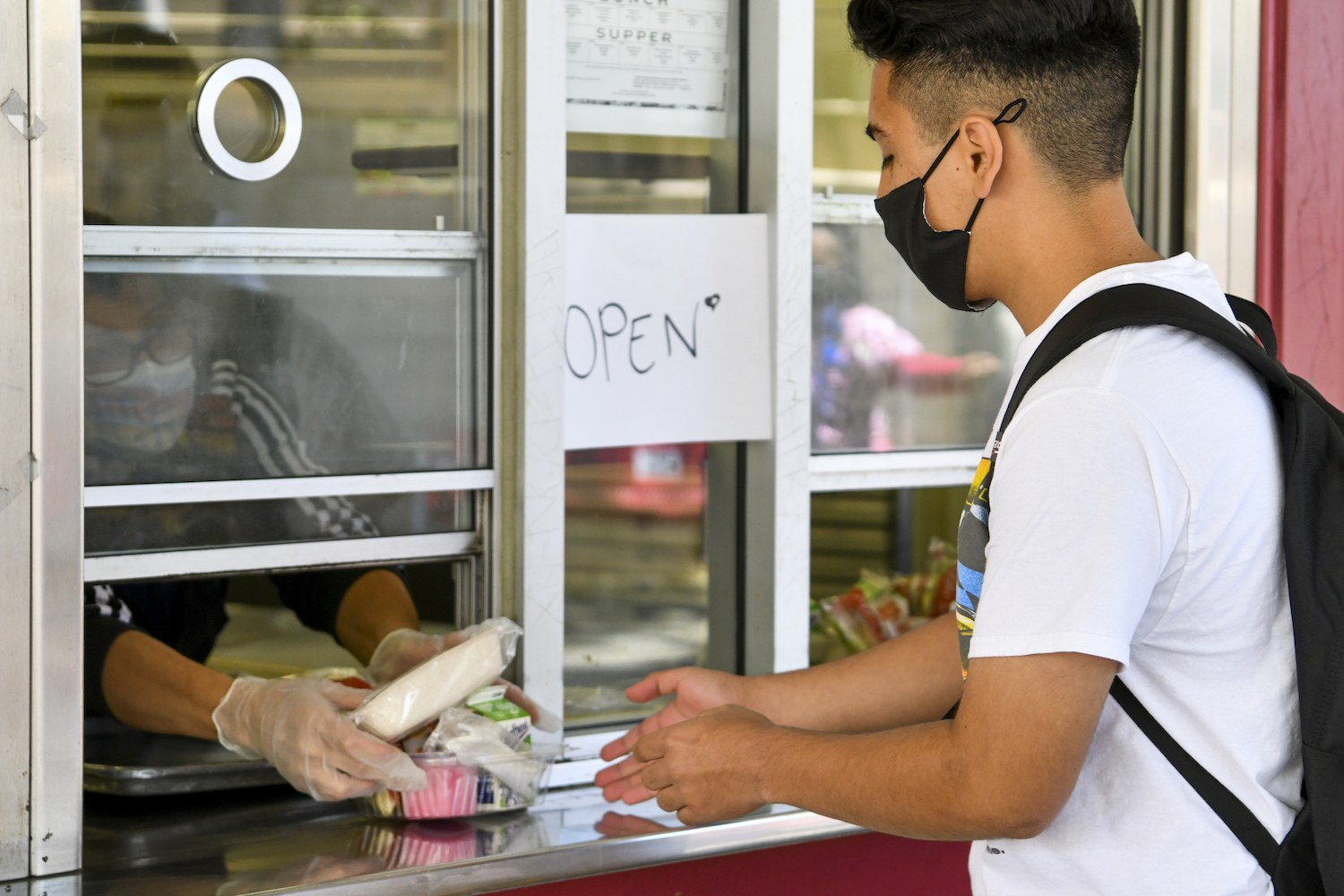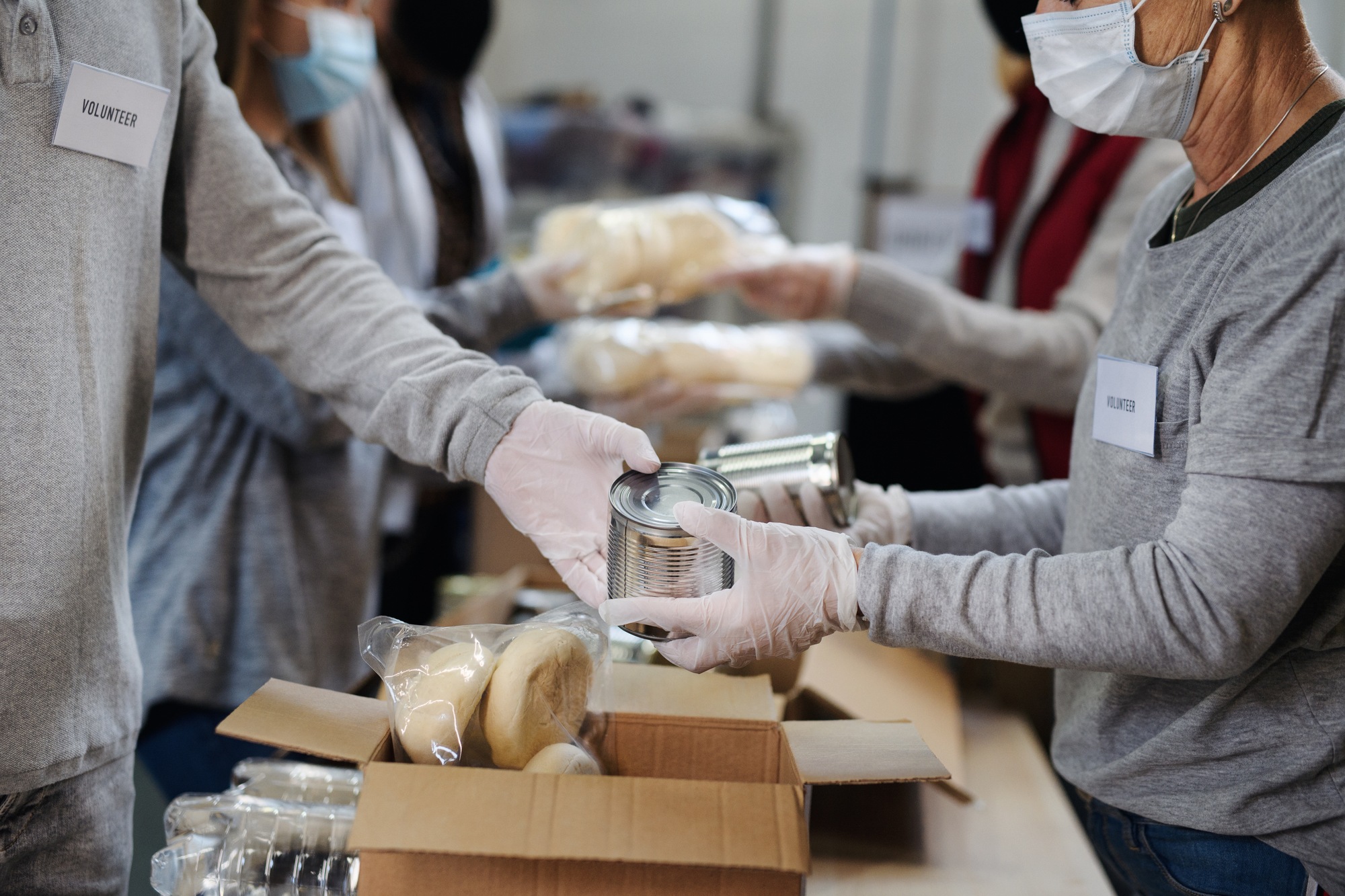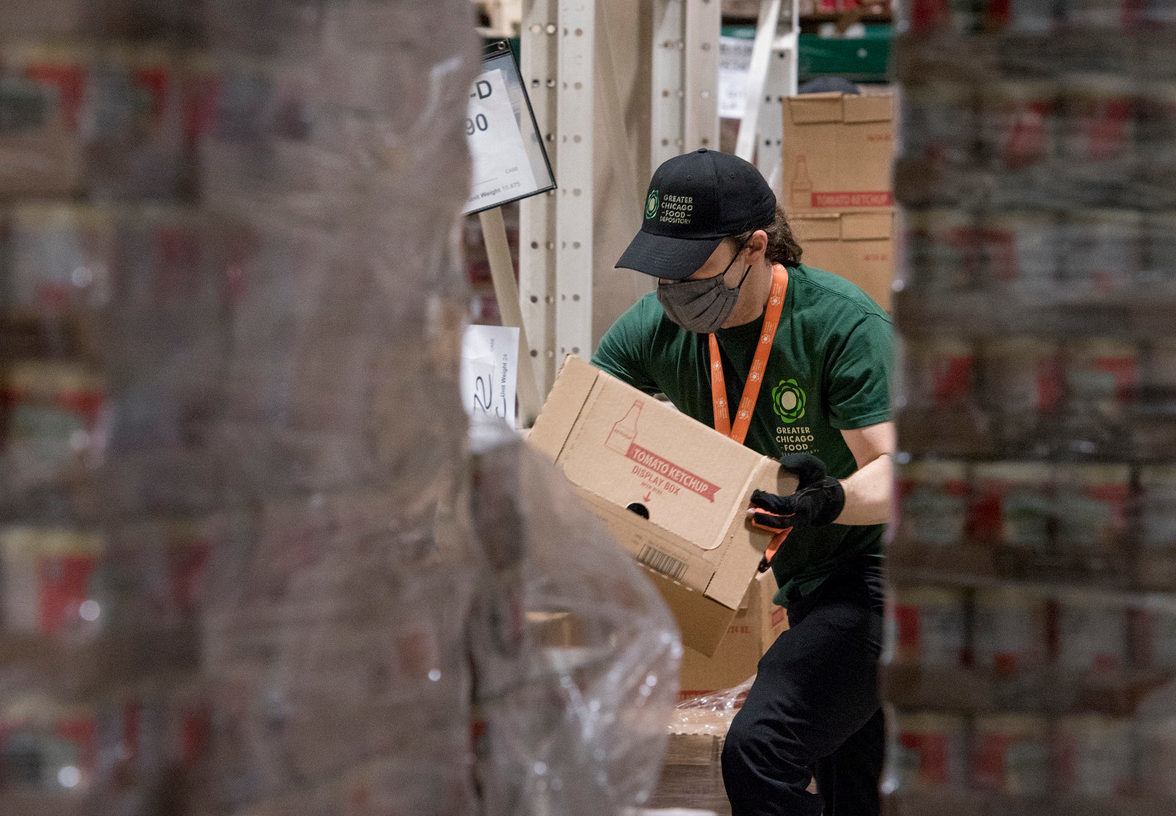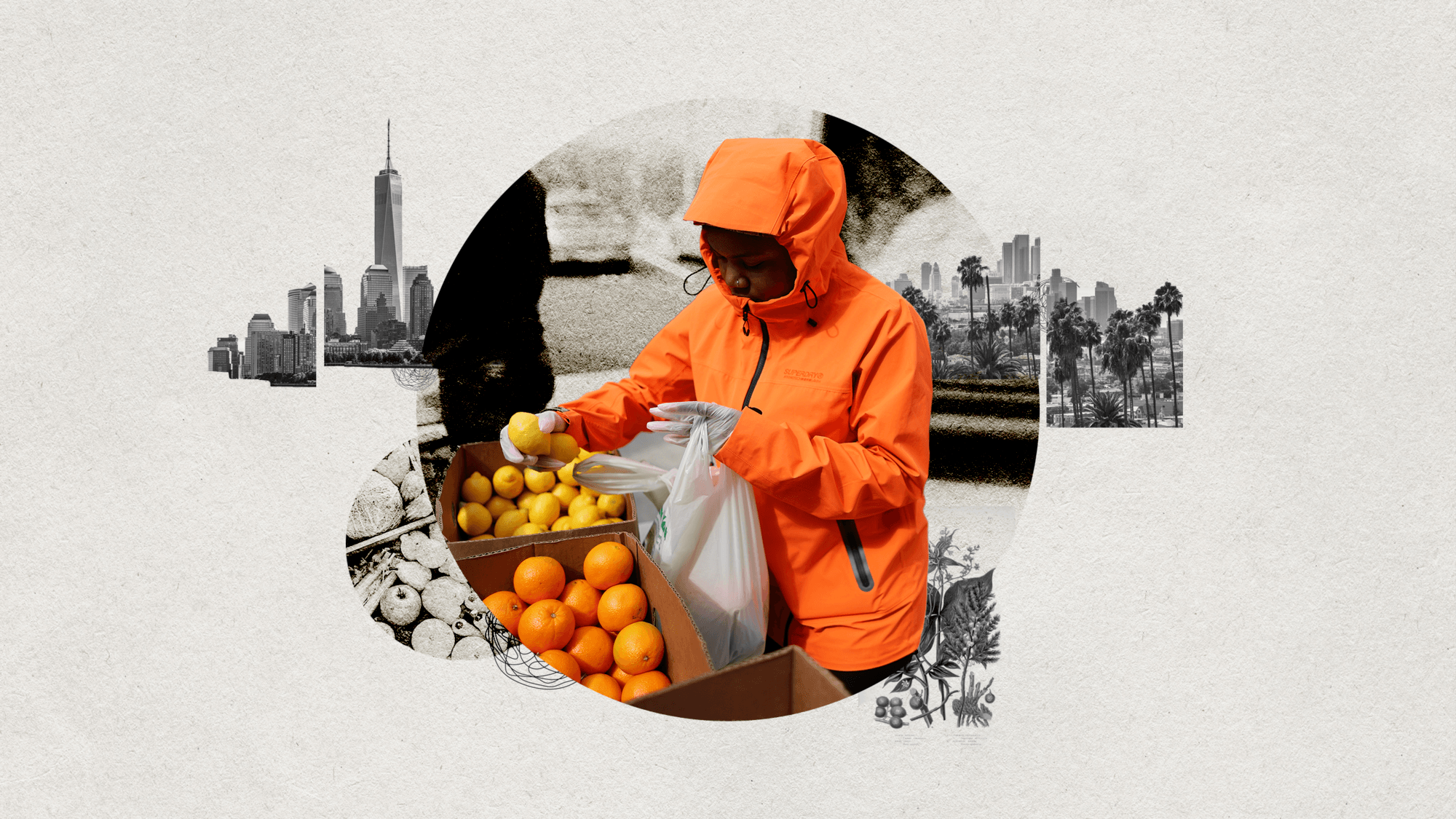
Graphic by Alex Hinton/iStock/Getty Images
New York City and Los Angeles are implementing measures to better understand where their food comes from and how it’s produced. Can they be used as examples to ramp up more sustainable and equitable procurements on a federal level?
In September, New York City’s Mayor’s Office of Food Policy released a report titled, “Citywide Goals & Strategy for the Implementation of Good Food Purchasing.” That it wasn’t loudly, roundly celebrated by New Yorkers (assuming they’d heard of it at all) likely had much to do with the dryness of the title and the intricacy of its mission. But within its pages was a lot of good news for the city’s nearly 9 million residents, many of whom were precipitously vulnerable to healthy food shortages during the pandemic, thanks in part to supply chains that originate far beyond the borders of the five boroughs.
The report was billed as a “first step” in figuring out where and how city departments like Education and Health and Human Services procure their food and from whom—all with an eye to shifting to a more regional supply chain that’s also more resilient, sustainable, and equitable by 2031. Though the report is timely, it actually marks years’ worth of effort on the part of city staffers and elected officials, policy wonks, and advocates at numerous universities and nonprofits working towards an overall healthier food system.
According to the Union of Concerned Scientists, a nonprofit science advocacy organization, “incorporating ‘good food’ standards into traditional [institutional] food purchasing contracts results in increased transparency and accountability across the supply chain, as it requires food distributors and food service management companies to report more information from production to purchase, and gives buyers more control over the foods they serve and the systems they support.” The backbone of this effort in New York City, Los Angeles, and elsewhere, is a five-pronged framework for food-buying institutions, devised by the Center for Good Food Purchasing (CGFP): supporting smaller farms within local economies; sourcing from producers who use sustainable methods and are committed to fair and safe working conditions, including humane animal treatment when applicable; and centering nutritious whole foods over processed and plant-based over meat. With New York joining Los Angeles as well as 60 institutions—most of which are school districts and municipal agencies—in embracing these standards, the question now is: Has good food purchasing finally gained enough traction to become part of a more concerted national agenda?
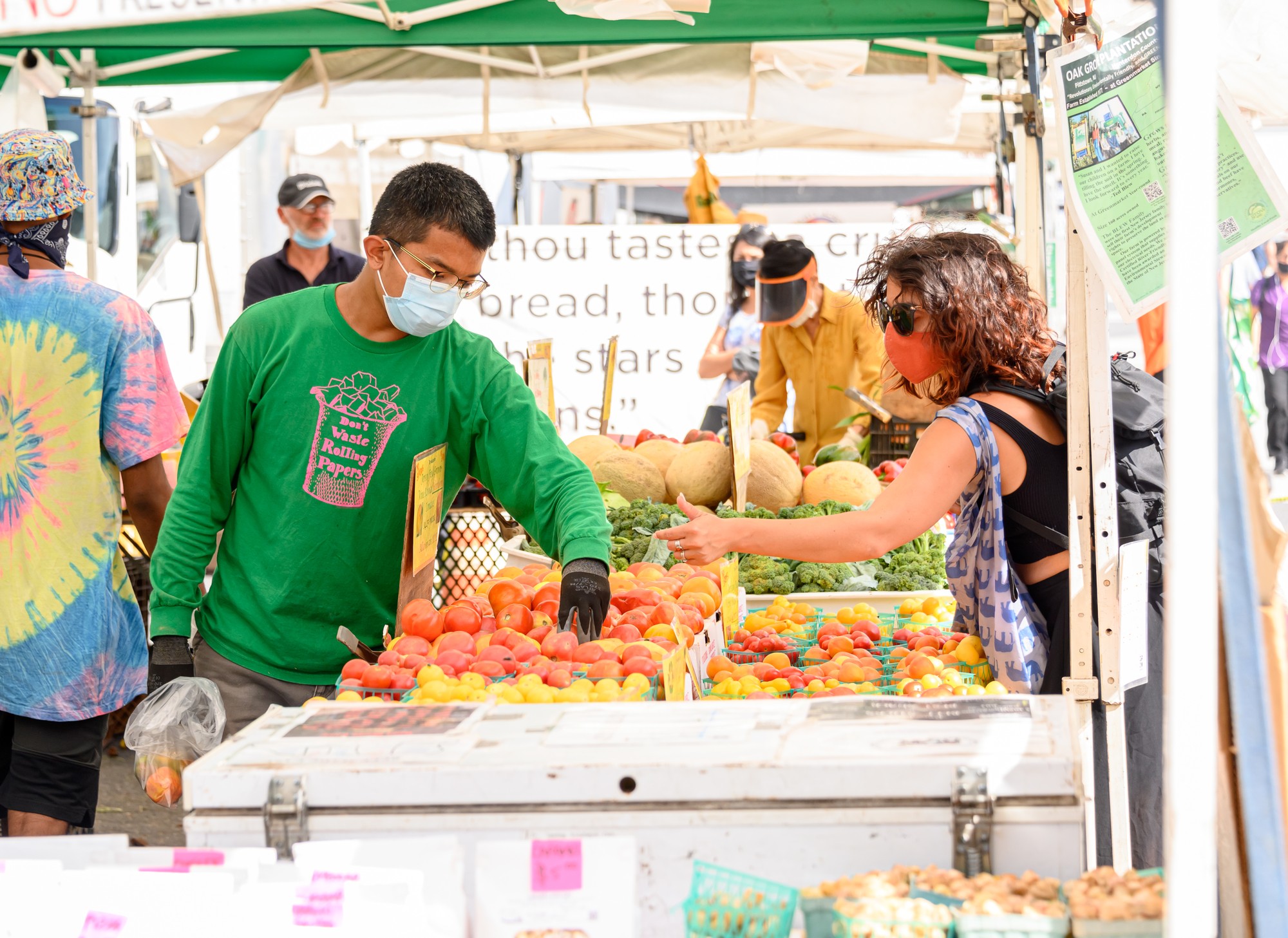
The backbone of incorporating good food standards include supporting smaller farms within local economies, sourcing from producers who use sustainable methods, and those who are committed to fair and safe working conditions.
Getty Images/Noam Galai
“From the perspective of values-based procurement, where [people realize] you can’t invest in [things like] the supply chain without investing in labor, this is a really exciting time,” said Laura Edwards-Orr, CGFP’s director of institutional impact. Having gleaned lessons about the interrelatedness of so many food-related systems from the pandemic, Edwards-Orr wonders: “How do we capture those and synthesize them to feed federal policy conversations? How do we leverage New York and L.A. as proof points to articulate to federal policymakers what’s possible?”
Compared to Los Angeles, which adopted good food purchasing in 2012, New York’s Mayor’s Office of Food Policy and participating city agencies are new in committing to the program, starting the process about five years ago. New York City racks up $500 million in annual food procurements; L.A.’s school district alone spends about $120 million (no comparable figures are available for the city). But that’s a drop in the bucket compared to what the U.S. government spends on food: In 2014, it shelled out $20 billion in reimbursements for school meal and snack programs alone, according to the Congressional Budget Office, with tens of billions spent altogether when military, VA hospitals, federal prisons, and federally-supported senior feeding programs are factored in.
Some lessons from one city are applicable to others—and, potentially, to federal agencies. One of these, said Edwards-Orr, is the importance of “partnerships between institutions and community members, policymakers and community members, and institutions and policymakers, so key stakeholders can build trust and relationships in order to build supportive policies.” In-depth research is a must; six New York City agencies just completed baseline audits of where they’re purchasing from and how well their vendors match up to the CGFP’s standards. Although, said Kate MacKenzie, executive director of the Mayor’s Office for Food Policy, “We’re not 100 percent complete with data because many vendors have never been asked to report back on where their food was packed or grown.” The most difficult standards to meet, she said, are environmental sustainability and animal welfare because, on the one hand, “capturing and quantifying the carbon footprint of food is challenging,” and on the other, “humanely raised meat is often more expensive so how can we come up with the money to create that spend?”
“Folks need to recognize that public money should serve the public good. [Good food purchasing] can create change in the economic structure of the food system.”
That expense also hints at a bigger challenge. Although there’s no one path to procuring food in New York City, one mandate under New York State law has to do with low cost, when procurements are done by bid. Namely, “If I want to buy carrots, I typically have to go for the vendor who can supply me with the lowest bid and the cheapest product,” said MacKenzie. “That means we cannot do procurement and intermingle it with social policy, so the opportunity in front of us is to demonstrate that…the health of food is science-based and we need to change state law.”
School districts especially, said Paula Daniels, co-founder and chair of CGFP, are also often tied in to low reimbursement rates, and that structure “forces economies of scale and reinforces the pipelining ability to manufacture a fast turnaround time from menu development, to product ordering and delivery.” To scale up good food purchasing for other school districts, municipalities, states, and yes, on the federal level—where cost can also be a factor—it’s critical to figure out how to change the process for high-volume bids so that they can include smaller, more local operations, and farms run by communities of color. L.A. has shown a way forward here, in the way it’s incorporated good food purchasing into its bid system. Daniels said having someone embedded somewhere in the system “who’s dedicated to the process to make sure it attains success,” can help. Minneapolis Public Schools, for example, have accomplished this by hiring a coordinator for its “Farm to School” program who oversees just that. An amendment to federal purchasing policy similar to what New York City is seeking from the state “would be a strong step in the direction of enabling more robust values based procurement,” wrote Edwards-Orr in an email. “However, it would still need to be adopted locally for widespread implementation.”
Daniels believes there’s a lot of opportunity to reform the Department of Agriculture (USDA)-run National School Lunch Program with good food purchasing, starting with raising the amount of reimbursement for meals, which currently averages $3.32 per meal and is less than the $3.81 average to produce it. And while she said that there are also state laws in play that determine how much is spent on what food from whom, federal procurement rules can sometimes dominate; changing those can alter the way states and municipalities operate—not just when it comes to school districts, which tend to be the biggest food purchasers in any given city, but also for other agencies like hospitals, jails and prisons, departments of aging.
By far the most important thing that has to happen to nationalize good food purchasing is building infrastructure. Edwards-Orr sees a need to “build out a more robust toolkit with regards to supplier diversification—structural solutions to allow a [small-scale] vendor to bid on a single item rather than all of them; or when procurement requires 55 deliveries but a supplier can only take on 15. With some technology assistance, [agencies] could onboard small community-based suppliers making tortillas or muffins or growing food at a small scale.” Additionally, she pointed out that districts and municipalities that had central storage, kitchens, and distribution capacity were better able to maintain values-based purchasing during the pandemic, and to leverage local suppliers to fill gaps in supply. “As we’re seeing now, however, the capacity to offer meaningful, safe, and fairly compensated positions within the supply chain is also fundamental to leveraging that infrastructure.”
Daniels calls food hubs “essential” pieces of infrastructure, especially those that are “intentionally structured to serve the goals of aggregating from smaller and historically disadvantaged farmers, and aggregating food produced sustainably in a climate-smart way.” California passed farm-to-community food hub bill AB-1009 into law, which has just this sort of mission behind it, backed with $15 million in grant money to build hubs across the state. The New York State Regional Food Hub, finally underway after being greenlit in 2014, is meant to connect small- and medium-size producers with institutions in the city.
A food hub, explains Robert Maggiani, a sustainable agriculture specialist with the National Center for Appropriate Technology (NCAT), “is by definition a middleman between the producer and buyer,” making purchases from farmers; getting goods delivered to a central location for washing, sorting, and packing; then delivering it to clients. When it comes to hubs like The Common Market and Red Tomato, which center good food purchasing in their mission statements and are “front line connectors between small rural producers and big urban consumers,” said Maggiani, “They have to sell the importance of the idea to both sides while at the same time doing everything as well as [a food service corporation like] Sysco—you’ve still gotta have products delivered on time at the correct temperature with a good billing system.”
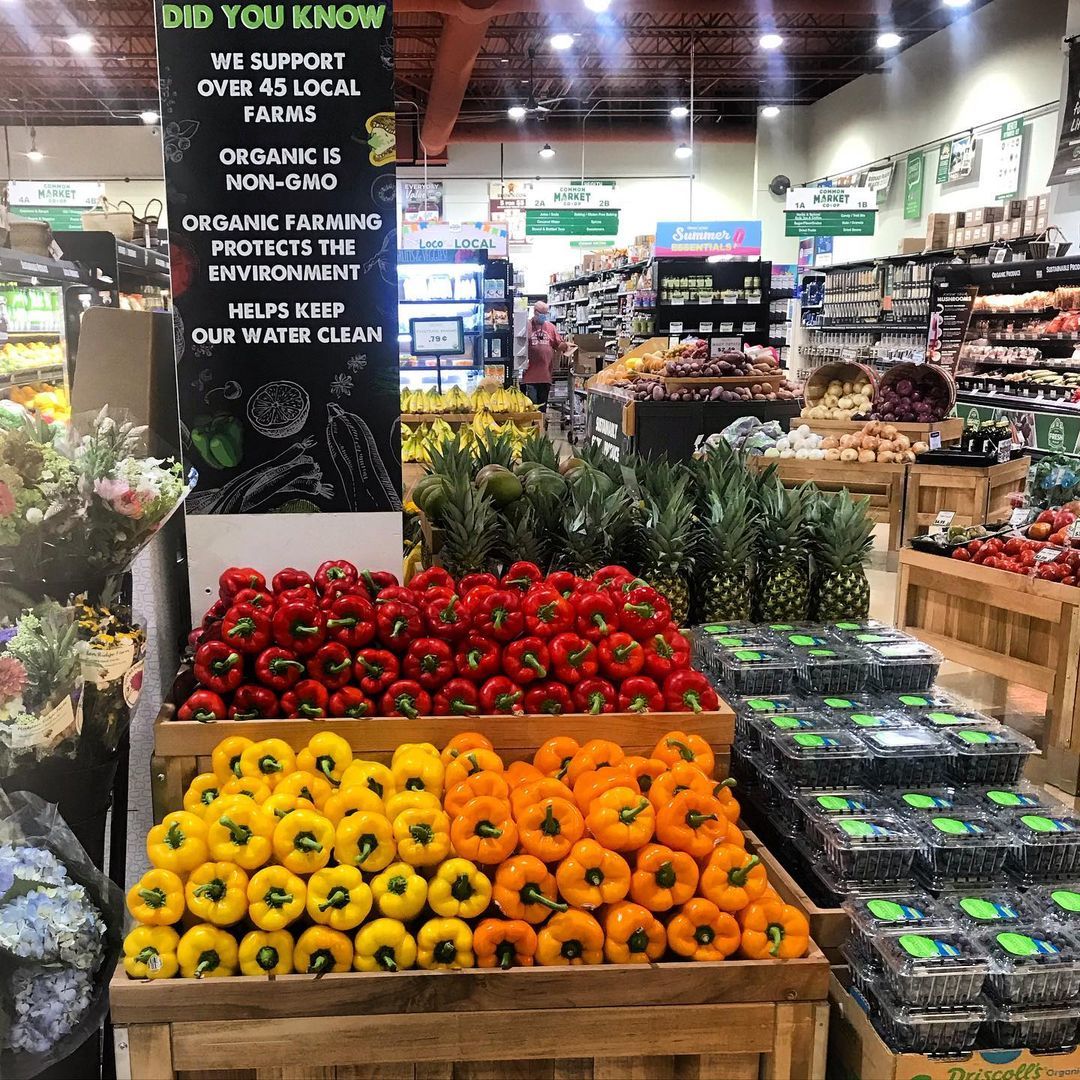
The Common Market is a nonprofit regional food distributor operating in the Mid-Atlantic, Georgia, and Texas. It is a food hub which acts as a middleman making purchases from farmers then delivering it to clients.
Instagram/commonmarketcoop
Good technology is part of that equation; it’s what allowed The Common Market to deliver some 10,000 emergency food boxes a week to people in New York City for six months near the start of the pandemic, with items sourced from Pennsylvania, New York, and New Jersey area farmers and producers who’d lost their wholesale outlets. “They had to put boxes together quick, pay attention to how many boxes got squash and how many didn’t. That was a big deal for them,” Maggiani said. But opportunities to brainstorm face-to-face are also important to making good food purchasing bigger, better, more national. Annual conferences and forums hosted by Johns Hopkins Center for a Livable Future and non-profit Winrock International bring practitioners together from all over the country to talk to each other and “build trust, which is very important in this business,” said Maggiani. Brainstorming can allow interested practitioners to “take all these disparate efforts from around the country and learn from each other quicker, with people from all states putting in their two cents: ‘What about this? Let’s not forget about food justice and equity—we need to build that in, not add it on later.’”
Ultimately, procurement from a system “that pumps out a lot of industrial food is blind to its impact on the environment and delivers calories and not quality food, and it reinforces a system that doesn’t deliver health to people, communities, and the planet,” said Daniels. To make a true and concerted push for country-wide change, “Folks need to recognize that public money should serve the public good. [Good food purchasing] can create change in the economic structure of the food system.”

